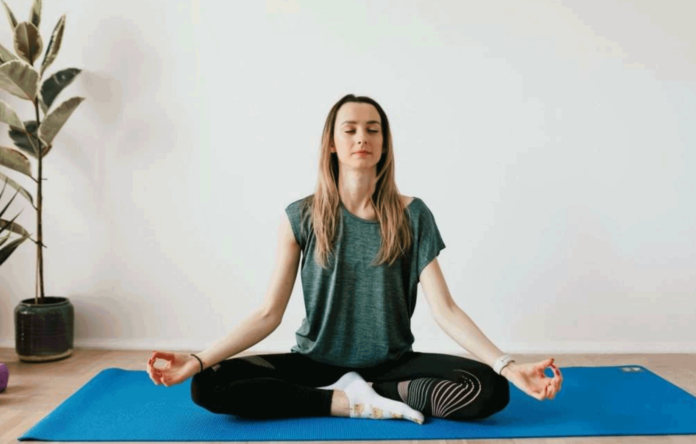Introduction to Relaxation Techniques
In today’s fast-paced world, stress has become a constant companion for many. Whether it’s anxiety creeping in, sleepless nights, or chronic pain weighing you down, finding peace feels like a distant dream. That’s where relaxation techniques come in—simple, practical tools to calm your mind and body. These methods, rooted in psychology and science, offer a natural way to unwind and reclaim your well-being. From easing anxiety to improving sleep, this guide dives deep into the best relaxation techniques and even explores the relaxation time formula to help you master them. Let’s embark on this journey to a calmer, healthier you.
Why Relaxation Techniques Matter
Stress isn’t just a feeling; it’s a physical and mental response that can wreak havoc if left unchecked. Cortisol, the stress hormone, spikes during tense moments, leaving you jittery or exhausted. Over time, this can lead to anxiety disorders, poor sleep quality, and even heightened pain perception. Relaxation techniques work by counteracting this stress response, lowering cortisol levels, and activating the parasympathetic nervous system—the body’s “rest and digest” mode. Whether you’re battling anxiety or seeking better sleep, these methods are your ticket to balance.
Relaxation Techniques for Anxiety
Anxiety can feel like a storm in your mind—racing thoughts, tight chest, and an overwhelming sense of dread. Thankfully, relaxation techniques for anxiety offer a lifeline. Here are some of the most effective ones:
Deep Breathing Exercises
Deep breathing is a cornerstone of relaxation. By slowing your breath, you signal your brain to calm down. Try the 4-7-8 method: inhale for 4 seconds, hold for 7, and exhale for 8. Repeat this for a few minutes, and you’ll feel the tension melt away. It’s simple, portable, and works wonders during an anxiety spike.
Progressive Muscle Relaxation (PMR)
PMR involves tensing and then releasing each muscle group in your body. Start at your toes and work up to your head. This not only eases physical tension but also distracts your mind from anxious thoughts. Studies in psychology show PMR reduces anxiety by breaking the cycle of stress-induced muscle tightness.
Visualization
Picture a peaceful scene—a beach, a forest, or a cozy room. Close your eyes and immerse yourself in the details: the sound of waves, the smell of pine, the warmth of a fire. Visualization shifts your focus away from worry, offering a mental escape that soothes the soul.
Relaxation Techniques in Psychology
Psychology has long embraced relaxation techniques as tools for mental health. Therapists often recommend them to clients dealing with stress, trauma, or emotional overwhelm. Let’s explore how these methods are grounded in psychological principles.
Mindfulness Meditation
Mindfulness, a buzzword in modern psychology, is about staying present. Sit quietly, focus on your breath, and let thoughts pass without judgment. Research shows mindfulness reduces activity in the amygdala—the brain’s fear center—making it a powerful relaxation technique for anxiety and beyond.
Autogenic Training
This lesser-known method uses self-suggestion to relax. Repeat phrases like “My arms are heavy and warm” while focusing on that sensation. Developed by a German psychiatrist, autogenic training taps into the mind-body connection, promoting deep calm.
Cognitive Behavioral Techniques
Sometimes, relaxation pairs with reframing thoughts. Cognitive Behavioral Therapy (CBT) teaches you to challenge negative patterns, but adding a relaxation technique like diaphragmatic breathing enhances its effects. It’s a one-two punch against stress.
Relaxation Techniques for Pain
Chronic pain can trap you in a cycle of discomfort and tension. Relaxation techniques for pain don’t just mask symptoms—they address the mind’s role in pain perception. Here’s how to find relief.
Guided Imagery
Similar to visualization, guided imagery involves a narrated journey to a peaceful place. Apps or recordings can lead you through it, helping your brain release endorphins—natural painkillers. Studies show this reduces pain intensity for conditions like arthritis or migraines.
Body Scan Meditation
Lie down and mentally “scan” your body, noticing areas of pain or tension without judgment. Pair this with slow breathing to release tightness. It’s a staple in pain management programs because it fosters awareness and relaxation simultaneously.
Warmth and Relaxation
Applying a warm compress while practicing deep breathing can amplify relief. The heat relaxes muscles, while the breathing calms your nervous system. It’s a simple combo that tackles pain from multiple angles.
Relaxation Techniques for Sleep
Tossing and turning at night? Relaxation techniques for sleep can lull you into a restful slumber. Sleep is vital for health, yet stress often steals it away. These methods can help.
The 4-7-8 Breathing Trick
Yes, this gem works for sleep too! By slowing your heart rate, 4-7-8 breathing prepares your body for rest. Do it lying in bed, and you’ll drift off faster than you thought possible.
Bedtime Yoga
Gentle stretches like Child’s Pose or Legs-Up-the-Wall release physical tension. Pair them with mindful breathing, and you’ve got a recipe for deep sleep. Yoga nidra, a guided relaxation practice, is especially effective—some call it “yogic sleep.”
White Noise and Relaxation
A consistent sound, like rain or ocean waves, paired with a relaxation technique, creates a soothing bedtime ritual. It drowns out distractions while your mind unwinds with PMR or visualization.
Understanding the Relaxation Time Formula
Ever wondered how long it takes to truly relax? The relaxation time formula isn’t a strict equation but a concept from physics and psychology adapted for stress relief. In physics, it’s the time a system takes to return to equilibrium after disturbance. For us, it’s how long it takes to calm down after stress.
Factors Affecting Relaxation Time
-
Stress Level: Higher stress means longer relaxation time.
-
Technique: Quick fixes like deep breathing work faster than, say, a full yoga session.
-
Practice: The more you use a technique, the quicker it kicks in.
For example, after a tense meeting, 5 minutes of deep breathing might suffice. But after a chaotic week, 20 minutes of mindfulness might be your sweet spot. Experiment to find your personal relaxation time formula.
How to Incorporate Relaxation into Your Day
Making relaxation a habit is key to reaping its benefits. Here’s how to weave these techniques into your life.
Morning Calm
Start with 5 minutes of mindfulness or stretching. It sets a peaceful tone for the day, especially if anxiety tends to strike early.
Midday Reset
Feeling overwhelmed at work? Step away for a quick PMR session or a breathing break. It’s like hitting the reset button on your stress levels.
Evening Wind-Down
End your day with bedtime yoga or guided imagery. Consistency turns this into a signal for your body to relax and prepare for sleep.
Benefits Beyond the Obvious
Relaxation techniques do more than just calm you down. They improve focus, boost immunity, and even enhance relationships by reducing irritability. Over time, you’ll notice a ripple effect—less pain, better sleep, and a happier outlook.
Common Mistakes to Avoid
Even simple techniques can trip you up if you’re not careful. Avoid these pitfalls:
-
Rushing Through: Relaxation takes time—don’t force it.
-
Inconsistency: Sporadic practice won’t build the habit.
-
Ignoring Discomfort: If a technique feels off, switch it up.
Tailoring Techniques to Your Needs
Everyone’s different. If anxiety’s your main foe, lean on mindfulness. For pain, try guided imagery. Sleep troubles? Bedtime yoga’s your friend. Mix and match until you find what clicks.
Conclusion: Your Path to Peace
Relaxation techniques are more than a luxury—they’re a necessity in our hectic lives. Whether you’re easing anxiety, soothing pain, or chasing better sleep, these methods, backed by psychology and science, offer real results. The relaxation time formula reminds us that calm is a process, not an instant fix. Start small, stay consistent, and watch stress fade away. Which technique will you try first? Your journey to a calmer life begins now.
















